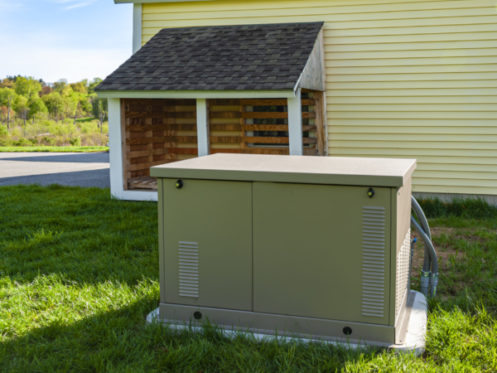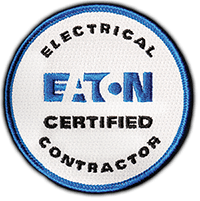Standby generators installed by Dawson's Electric, serving Fuquay-Varina and surrounding areas, fulfill a growing need. Without electricity, food spoils, electronic devices stop working and cell phones can’t be charged. Extended blackouts cause stress and worry. Loss of power to a home, or a business, is, at best, an inconvenience.
One solution is bulky portable generators, but the best solution is a properly installed whole house standby generator. When a blackout hits, the generator goes on seamlessly. There are many factors to consider before deciding what your best options are.
Backup Generator – Keeping the Power On
Whole house generators are integrated into the breaker box. When the electricity goes out, the generator starts to power the home in about 30 seconds. Once power is restored, the process is reversed. This is a critical safety feature.
An Automatic Transfer Switch (ATS) is the mechanism behind this safety component. An ATS keeps the public utility and backup generator circuits always separated. The ATS monitors the utility power in anticipation of a blackout. When a blackout occurs, the utility connection is turned off, and the generator starts.
When the generator is in use, the switch continues to monitor the utility’s power, and once it senses the power is back on, the generator is turned off. Then, the ATS disconnects the generator and reconnects to the utility power. Without an ATS, there is a high potential for a damaging overload.
An alternative is to have an ATS only connect to critical circuits of the house. The advantage, because the generators must be sized, is a smaller, less expensive generator and savings on fuel.
Sizing the Standby Generator
Every home, or building, has unique power demands. A standby generator of lower capacity than the demand can cause damage and shorten service life. The power needs for entertainment centers and household appliances must be calculated. Major power users, like electric heaters, hot water heaters and ventilation systems, are also essential to consider.
Most newly built homes have 200-amp panels. Older homes have lower-capacity panels and may have added circuits. In both cases, a qualified electrician needs to determine peak usage. The standby generator must have the ability to power all circuits. A below-capacity generator can cause damage to appliances and electronics.
A typical home usually needs a high-capacity generator, but in all cases, the standby generator must have more capacity than required as a safety measure. Just like ensuring your generator’s capacity is adequate, it’s essential to prevent your electrical circuits from an overloaded circuit and learn how to address it to avoid electrical hazards.
Portable Generators
Portable generators are an inexpensive option with more limited capacity. Haphazardly using them, however, can be unsafe.
Only necessary lights and appliances can be safely powered. Qualified electrical contractors and electricians can install portable generator transfer switches, interlocking kits and the outlets needed. The electrician will demonstrate and explain how to use this system.
Standby Generator – Installation and Maintenance
Installing a whole house standby generator is straightforward. A selected critical circuit system is more complicated as the electrician needs to identify each circuit, and the ATC switch must be connected professionally and properly. In most situations, the breaker panel will need to be modified or replaced.
After the peak power has been determined, the installation takes place on the outside. In rare cases, especially in older homes, the breaker panel is inside. A licensed electrical contractor with qualified electricians can overcome any complications.
Maintenance depends on the manufacturer’s recommendations. The standby generator will come in an enclosure for protection against the elements. Gas motors need stabilizers to keep the fuel fresh and stable. Natural gas-supplied motors don’t require these. All standby generators need lubrication and oil, and many generators require coolant.
The installer should do annual inspections. An electrician can test the electronic components, check the power output while running and do a visual inspection.
Here are some signs your operating standby generator needs service or repairs:
- Dimming lights, slow starting appliances
- Hard starts, sputtering, uneven running
- Unusual smells and noises
- New clunky sounds
- Visible fluid leaks
Local Electrical Contractors – Standby Generators
We at Dawson's Electric are your best choice to install and maintain a standby generator. We also specialize in electrical repair and lighting services. Serving Fuquay-Varina and surrounding areas have taught us the importance of good customer service. We are only one call away – call us today!







